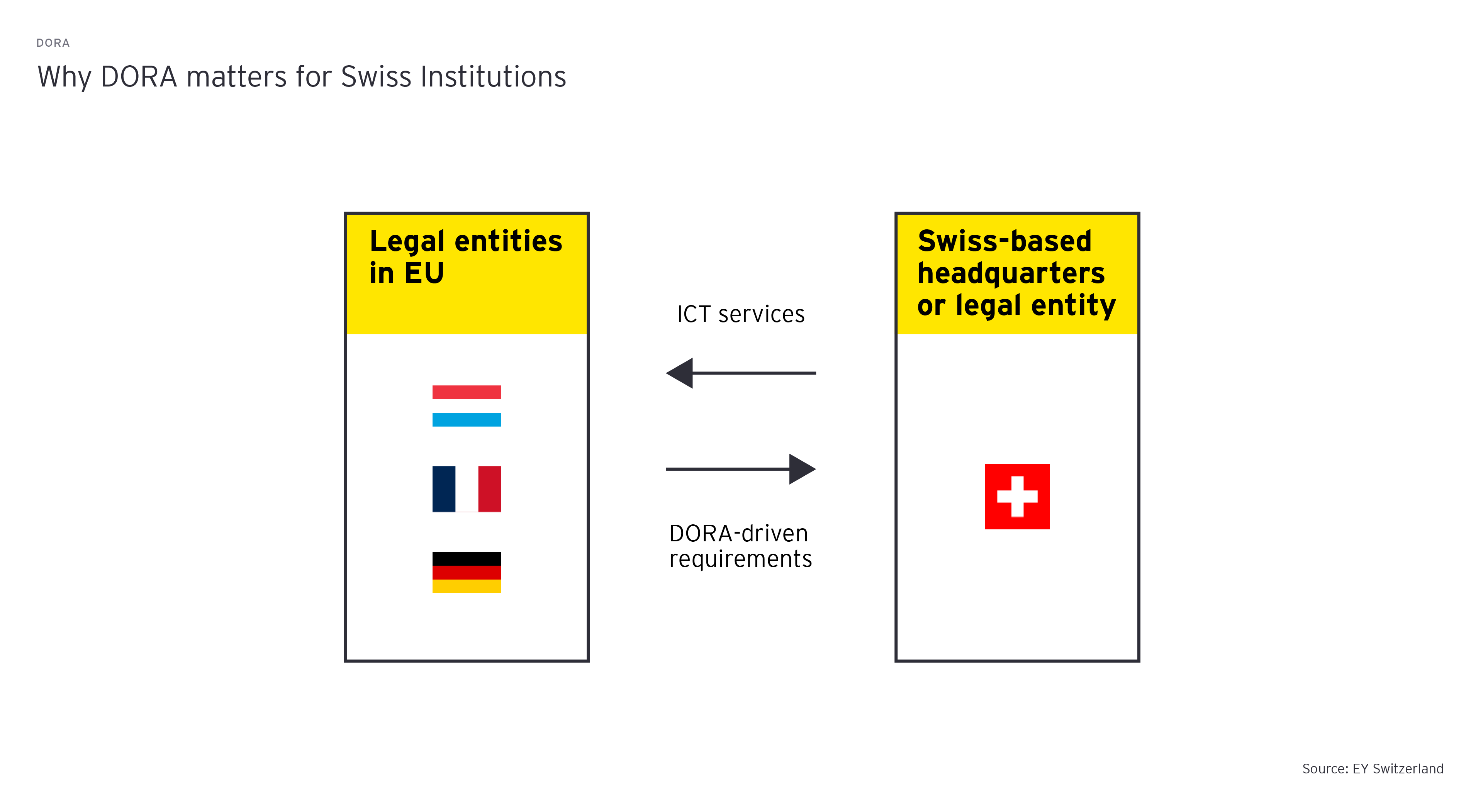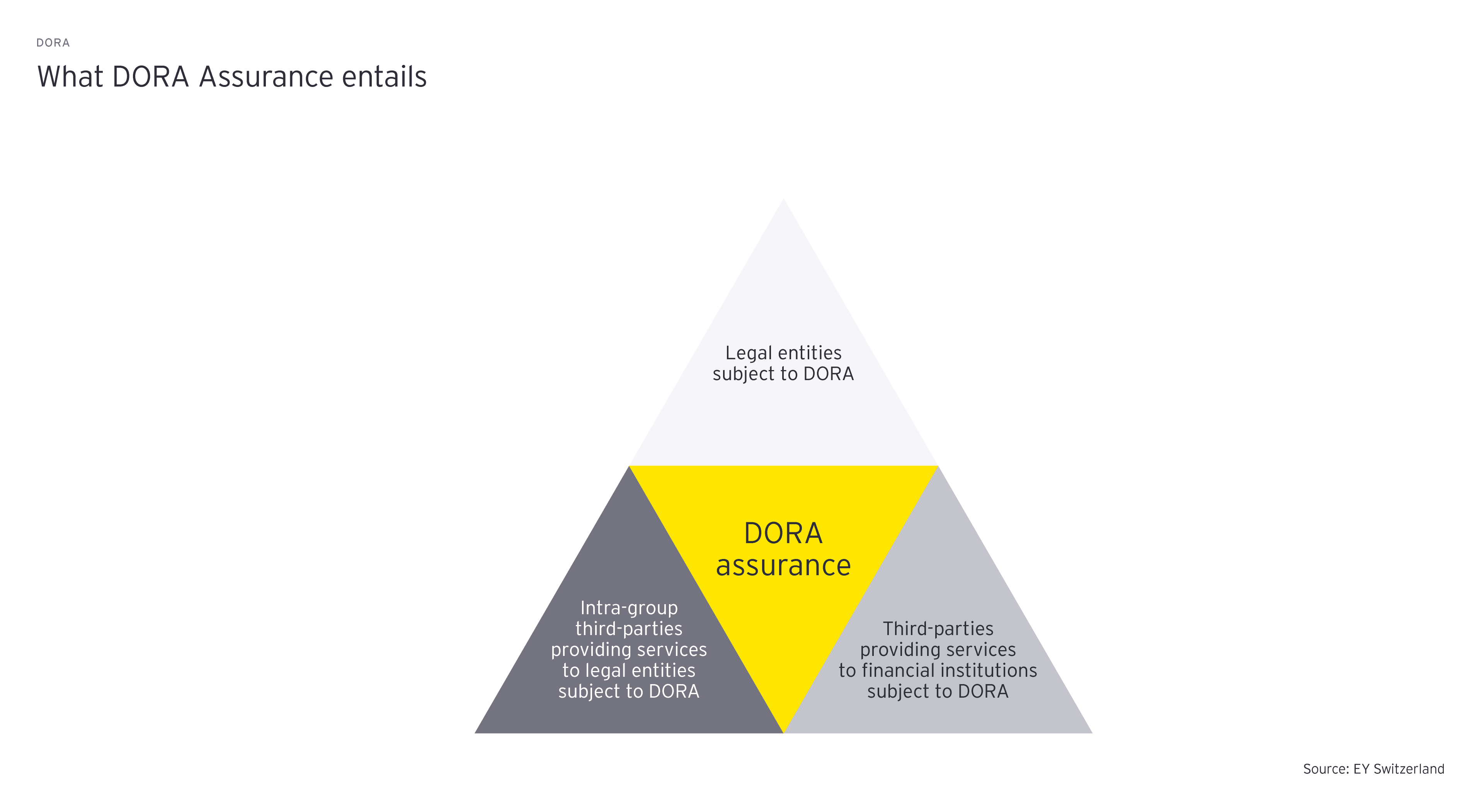EY refers to the global organization, and may refer to one or more, of the member firms of Ernst & Young Limited, each of which is a separate legal entity. Ernst & Young Limited is a Swiss company with registered seats in Switzerland providing services to clients in Switzerland.
How EY can help
-
Discover how EY's cybersecurity, strategy, risk, compliance & resilience teams can help your organization with its current cyber risk posture and capabilities.
Read more
DORA assurance requirements for legal entities directly subject to DORA: Financial institutions are required to establish a multi-year internal audit plan that encompasses the ICT risk management framework, demonstrating both the frequency and focus of audits. Additionally, internal auditors must enhance their skills related to ICT risks to effectively address these challenges.
DORA assurance requirements for intra-group third-parties providing ICT services to affected legal entities: When a legal entity directly subject to DORA uses ICT services from another legal entity within the same group, the latter is deemed an intra-group third-party. DORA treats these providers similarly to traditional third-parties, meaning that the consuming legal entity must ensure that the services provided are DORA compliant. Conducting separate audits for each legal entity using the same service is inefficient; instead, the group’s internal audit team or external auditor should produce a single audit report for distribution to all legal entities consuming the service.
DORA assurance for third-parties: DORA requires financial institutions to go beyond exclusively relying on third-party certifications and assurance reports. Instead, they must perform their own audits or engage external auditors. This marks a significant shift from previous regulations that did not require external audits and it will demand additional resources. However, organizations can reduce audit effort and frequency by using assurance reports specifically extended to cover DORA requirements, such as such as in accordance with the AICPA’s System and Organization Controls (SOC) and International Standards on Assurance Engagements (ISAE).








